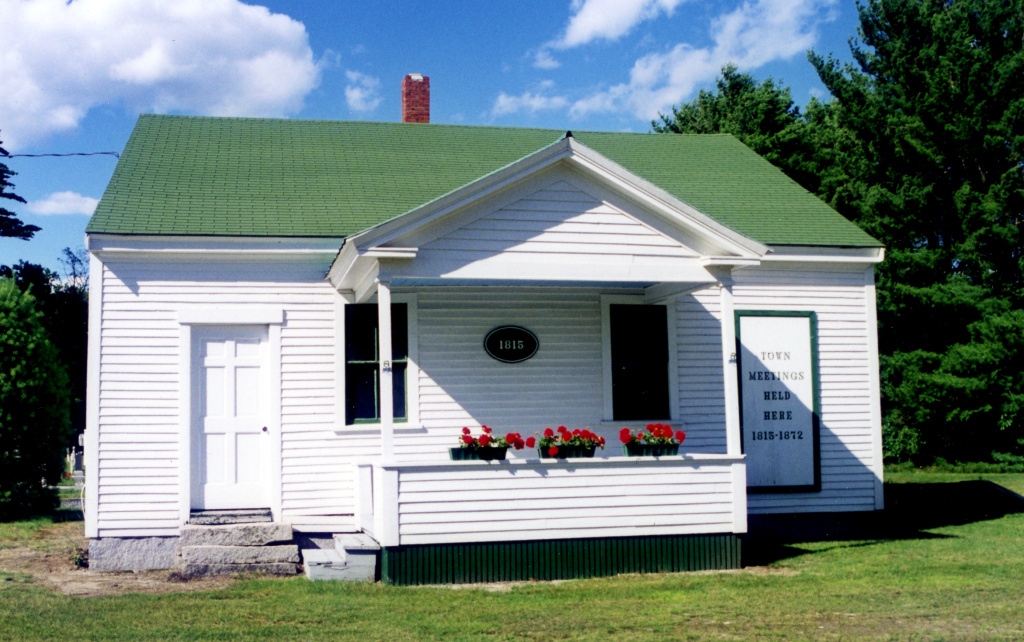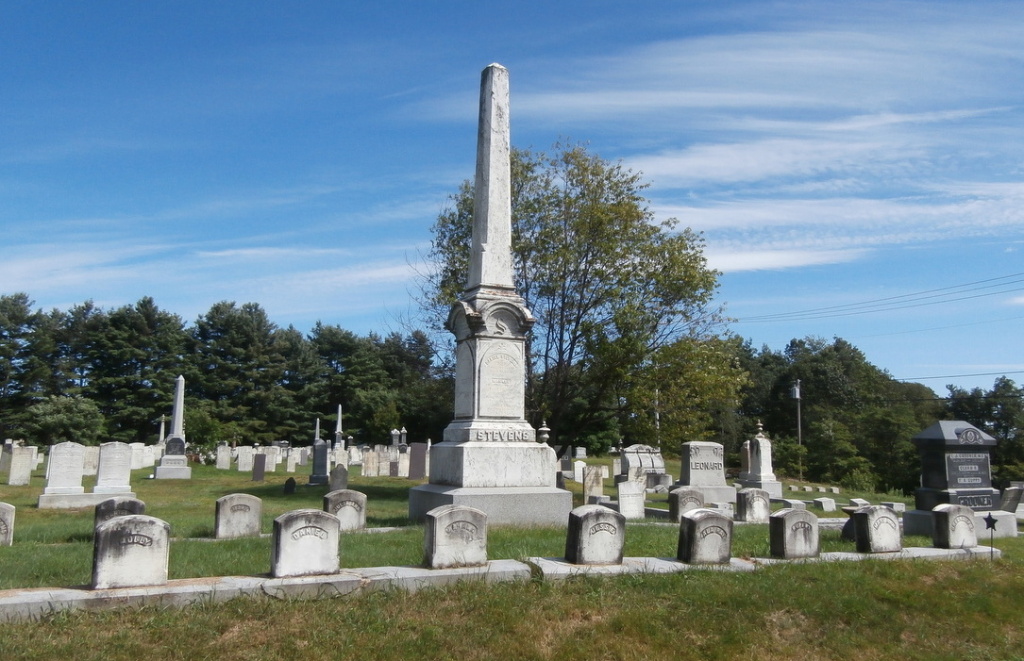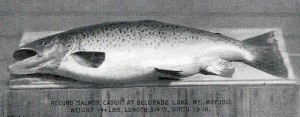Early Settlers
Before 1800, few explored the area we know as Belgrade, a land inhabited by Native Americans of the Abenaki tribe. Some explorers came with a vision of establishing a place to live, north from old Hallowell or east from New Hampshire. The Kennebec Proprietors’ lots were being sold, and some men had money to buy land. Others were veterans of the Revolution claiming their recompense. Some did not have the cash, but came anyway. They settled up later when the Proprietors in Boston offered a low price to “quiet” the squatters, who had no deeds. The area lay at the western edge of the Kennebec Purchase, and was called Washington Plantation.
 The beginning of the known history of Belgrade began in 1774, when a man named Philip Snow decided to look for new hunting grounds beyond the familiar lands in Sidney. He crossed the lake to the west and built a log cabin about two miles north of what is now Belgrade Depot. After six years of using this as a base for hunting trips, Snow sold his cabin to Joseph Greely. He returned at a later date to settle on the west side of the lake with his wife and nine children. Snow Pond (now Messalonskee Lake) and Mt. Philip (just north of Belgrade Lakes) were both named in his honor.
The beginning of the known history of Belgrade began in 1774, when a man named Philip Snow decided to look for new hunting grounds beyond the familiar lands in Sidney. He crossed the lake to the west and built a log cabin about two miles north of what is now Belgrade Depot. After six years of using this as a base for hunting trips, Snow sold his cabin to Joseph Greely. He returned at a later date to settle on the west side of the lake with his wife and nine children. Snow Pond (now Messalonskee Lake) and Mt. Philip (just north of Belgrade Lakes) were both named in his honor.
Later that year, two other settlers crossed to the west side of the lake to take up permanent residence. The first was Simeon Wyman, who with his wife, Thankful, and six children settled on the southern slope of Belgrade Hill. He cleared the first farm in the new area. Later, the Wyman’s son, also named Simeon, was the first white child to be born on the west side of the lake.
The second new arrival was twenty-four year old Joel Richardson. He was not married, and he settled on the north slope of Belgrade Hill. Two years later, he married a Wyman daughter named Sarah.
Another early arrival was Paul Yeaton, coming to Belgrade in 1794. He was a Revolutionary War veteran who built his family homestead on the West Road. He introducing a surname that came to be represented by many residents through the 20th century.
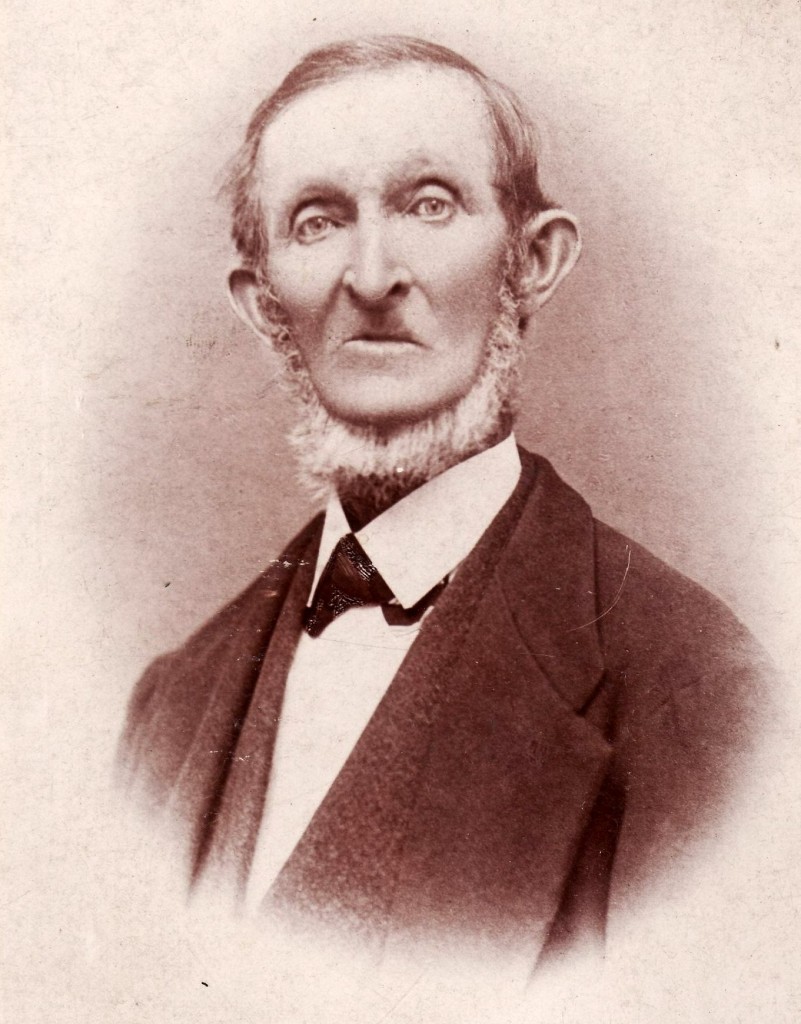
Andrew Yeaton (1808-1893) was the son of Paul Yeaton, the first Yeaton to settle in Belgrade.
Other early settlers’ names were Bean, Blake, Crosby, Crowell, Fall, Gilman, Hall, Hemmingway, Leighton, Linnell, McGrath, Mosher, Page, Philbrick, Rankins, Richmond, Staples, Taylor, Tilton, Tozier, and Weston. While some of the family names of these early settlers still exist in Belgrade, many have completely disappeared.
Becoming a Town
Belgrade was incorporated in Lincoln County in 1796 as a town of about 250 inhabitants, which was considered a large town in those days. The area, first called Washington Plantation, lay at the western edge of the Kennebec Purchase.
Later that year, a small part of Sidney, the land lying between Belgrade Hill and Oakland on the west side of Messalonskee Lake, was annexed to Belgrade by consent of the General Court.
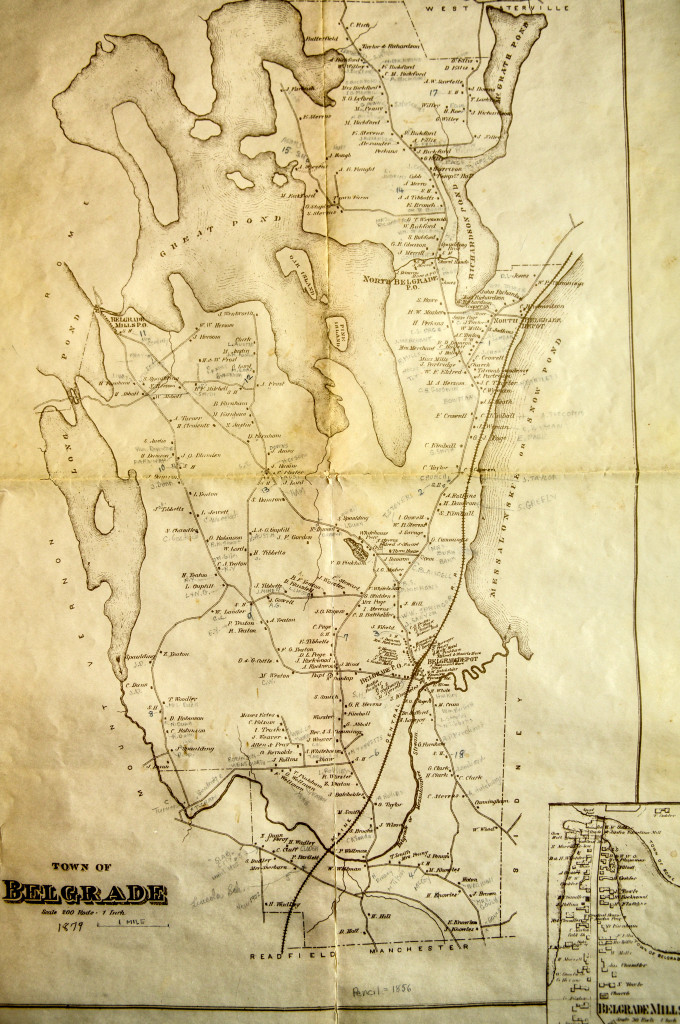
1879 map of Belgrade
(To see a larger version, please come visit the Belgrade History Room at the Center for All Seasons.)
A second acquisition of territory to Belgrade came later. The residents of the Town of Dearborn, incorporated in 1812 when it was known as West Pond Plantation, petitioned the Maine Legislature to be divided and annexed to neighboring towns. An act was passed in 1839 dividing Dearborn among the towns of Belgrade, Waterville and Smithfield. The land added to Belgrade lay north of the North Belgrade Stream up to the present Smithfield border. It constituted about one fifth of the area of Belgrade, adding about three hundred people to Belgrade’s population and making the size of Belgrade what it is today.
About two years later, the residents of a large part of Rome also petitioned the Maine Legislature to become part of Belgrade. This petition, however, was turned down.
Town government
Belgrade’s first town meetings were held in private dwellings or taverns, since Belgrade did not have a town hall. Finally, in 1815, two hundred dollars was set aside to construct a building for town meetings. Beginning when it was completed in 1834, town meetings were held at the Old Town Meeting House on Cemetery Road. When a Native American ill with small pox was quarantined in the building, a frightened community shunned it for future gatherings. In 1872, town meetings were moved to the Masonic Hall at Belgrade Depot, which later became the Grange Hall. In 1962, another location change was made to the Central School gymnasium, and in 2001, town meetings were moved to the Belgrade Community Center for All Seasons. The Old Town Meeting House still stands and is under the stewardship of the Belgrade Historical Society, which is dedicated to preserving this important icon of our past.
In the early years, Belgrade did not have a town office, but had for its “office” a trunk containing town records that was kept by each First Selectman, in whose home meetings were held. Later, one room in the first Central School became the town office, but in the tragic fire that destroyed the school in 1943, all the town records were lost. A room in the new Central school was used until 1960, when the town office moved to the back room of the Belgrade Lakes firehouse. Finally, in 1969, the town office was moved to its present location at the southwest corner of the intersection of Routes 135 and 27.
Belgrade farms
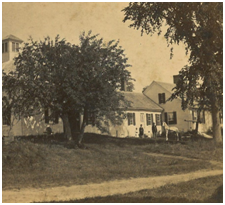
The Rockwood Farm across from the Old South Church
Almost all early Belgrade residents were farmers. Before the coming of the Maine Central Railroad in 1849, each family or cluster of farms was self-sufficient, clearing their land and raising their own crops and livestock. Sheep became especially important locally in the first half of the 19th century, first for home use and then for the woolen mills. Sheep’s wool increasingly yielded to the Jersey cow’s milk as a cash crop. In the mid-1800s, horses began to replace oxen for farm work and travel. Farming was hard work, and large families to share the burden of farm labor were common. Census records show that quite often extended families lived together on Belgrade’s farms.
 The Maine Central Railroad first came to Belgrade in 1849, allowing farmers to ship their products to market and making Belgrade’s lakes a tourist destination.
The Maine Central Railroad first came to Belgrade in 1849, allowing farmers to ship their products to market and making Belgrade’s lakes a tourist destination.
Belgrade residents became increasingly prosperous during the 19th century. There were a number of gristmills in town to grind the corn, wheat, and other grains raised by local farmers, and extensive logging made for a number of saw mills in operation. When staple crops such as corn, potatoes, and apples could be shipped to faraway markets by rail, farmers received cash for their produce. Maine apples were always in demand, many being shipped to other states and to Europe, where Maine apples brought the highest price of any in the United States.
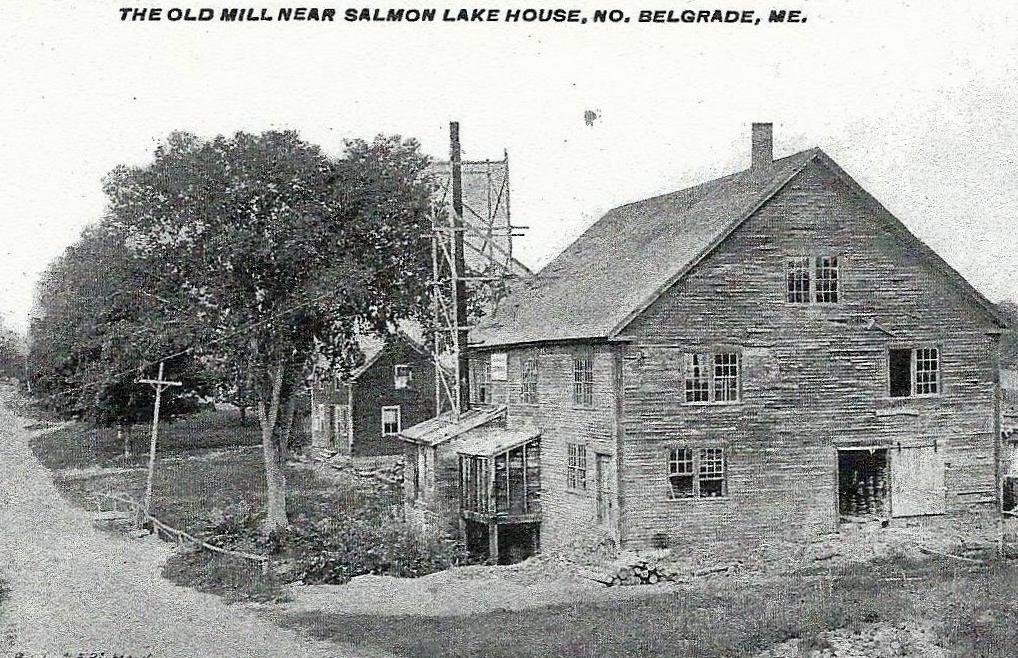
Large numbers of barrels and boxes were required to ship Belgrade’s apples, potatoes and corn to market. William Withers operated a mill near the dam in North Belgrade that produced them for farmers.
The Granges
Nothing brought Belgrade people together more than their chapters of the Patrons of Husbandry, commonly called the Grange. The Belgrade Grange at the depot was originally organized in 1887. It was not only a center for social interaction, but its primary mission was to support agriculture in the town.
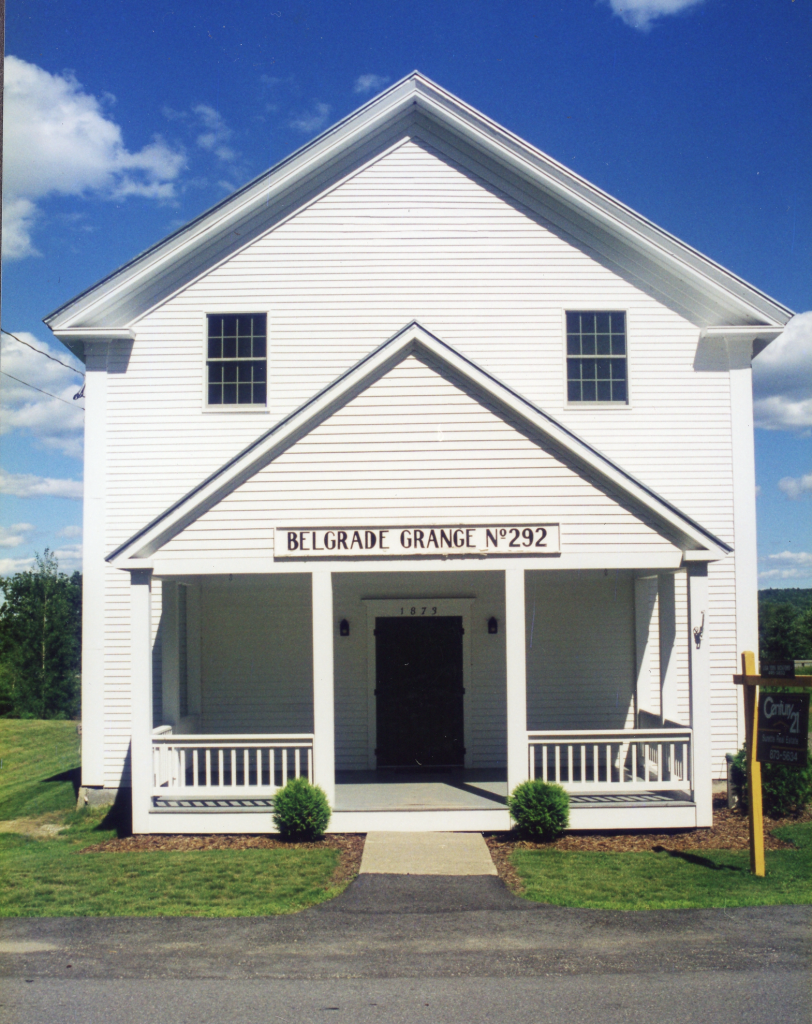 The Belgrade Grange Hall in the Depot was used for many community events.
The Belgrade Grange Hall in the Depot was used for many community events.
A second Grange was organized in 1906, when the Salmon Lake Grange in North Belgrade was chartered. Over the years, Salmon Lake Grange sponsored several fairs which included horse pulling, while the Belgrade Grange at the Depot and the Ladies Aid had indoor fairs with a supper. The Salmon Lake Grange Hall fell into disrepair and burned, and sadly we have no extant photograph of the building.
Manufacturing in Belgrade
The abundance of water power in Belgrade Lakes caused that village to once be referred to as Belgrade Mills or Chandler’s Mills. In 1888, a spool factory owned by Henry W. Golder employed 18 men and turned out a large number of spools. Other industries were a rake handle factory owned by Everett Cummings, a grist mill owned by Henry Morrill, and an excelsior mill, the property of Soule and Austin. A store owned by T.S. Golder was probably the largest store in Kennebec County. One could purchase anything there from a fine-tooth comb to a bag of meal.
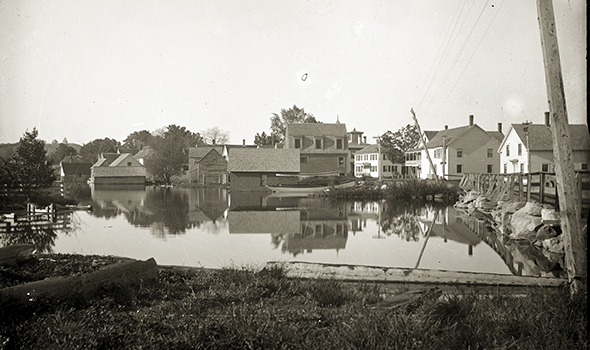
At one time Belgrade Lakes was known as Belgrade Mills
or Chandler’s Mills.
Famous residents
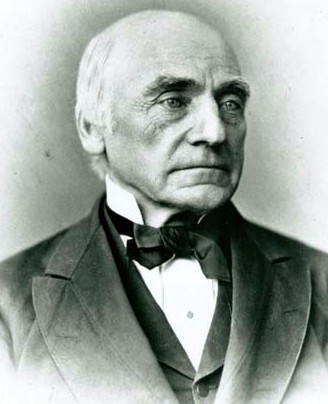
Lot M. Morrill (1813-1883) was governor when the Civil War broke out.
Over the years, Belgrade has had its share of famous residents. The two most prominent were Peaseley Morrill’s sons, Lot M. Morrill (born in 1813) and Anson P. Morrill (born in 1811). Both men became governors of Maine and members of Congress. In 1861, Lot Morrill was appointed to fill Hannibal Hamlin’s seat in the U.S. Senate when Hamlin became vice-president under Abraham Lincoln, and later Morrill also served as Secretary of the Treasury.
The earliest burial in Belgrade was in Pine Grove Cemetery, on the south side of Route 135, in 1803. Across the road, near the intersection with Route 27, is Woodside Cemetery, where a burial occurred in 1812. The next year, second-settler Joel Richardson was also buried there. Two other Belgrade cemeteries are the Quaker burying Ground, just to the east of Pine Grove Cemetery, and Ellis Pond Cemetery, just off the west shore of Salmon Lake. Peaseley Morrill, the father of Belgrade’s two governors, was buried there in 1855.
Tourism in Belgrade
In the decades following the Civil War, the railroad became a valuable asset to the town of Belgrade for more than just the transportation of agricultural products.

The Belgrade Hotel, built in 1900, was the jewel in the crown of the Belgrade lodging establishments.
The emergence of an affluent upper-middle class was inspired to escape the noise and pollution in American cities by getting back to nature, and many of these rusticators found the Belgrade lakes a welcoming summertime destination. Fishermen led the charge, but in 1900 the Belgrade Hotel was built to entice visitors to vacation in elegance by the clear water of Long Lake. The hotel complemented the many inns and more rustic lodgings around the lakes.
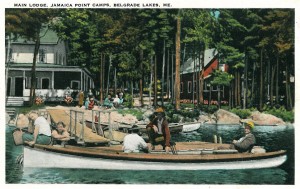
Jamaica Point Camps on Great Pond in its heyday as a tourist attraction.
At the same time, the number of new cottages and summer youth camps in Belgrade was exploding. Many more Americans owned automobiles, which brought hordes of tourists to the lakes. Over one hundred businesses eventually joined the list of accommodations in operation in the decades prior to World War II.
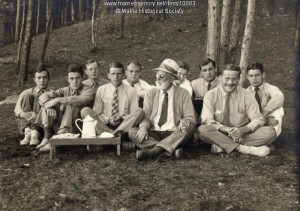
Henry Richards and his camp counselors taking tea at Camp Merryweather.
Camp Merryweather, located on Great Pond in North Belgrade, was founded in 1900 by Henry “Skipper” Richards and his wife, Laura Richards, making it the third oldest boys’ camp in the nation. Mrs. Richards was the daughter of the composer of The Battle Hymn of the Republic, Julia Ward Howe. Among the boys who attended the camp were the sons of President Theodore Roosevelt, Admiral Hinds, the poet Conrad Aiken, and Laurence Rockefeller. Camp Merryweather continued in operation until 1937.
![pic0704-white012[1]](https://belgradehistoricalsociety.org/wp-content/uploads/2014/07/pic0704-white0121.jpg)
![books[2]](https://belgradehistoricalsociety.org/wp-content/uploads/2014/08/books2.jpg)

The noted author, E.B. White, came to Snug Harbor Camps on Great Pond with his family in 1905 for a stay he described later in his life as, “four solid weeks of heaven.”
A prize winning salmon
Waterville Morning Sentinel – December 18, 1913:
“Belgrade has the honor of producing the largest land-locked salmon in the United States during the past year. In May last, Rev. Edwin A. White caught the fish, which weighed 14 pounds and four ounces. The salmon, now mounted, adorns Mr. White’s library.”
Based on records of the Maine Dept. of Inland Fisheries & Wildlife, salmon were first introduced into the Belgrade Lakes in 1878. Perhaps this is when the name Ellis Pond, which had formerly been Richardsons Pond, was changed to Salmon Lake.

Guides in Belgrade Lakes, waiting to take their “anglers” out to “wet a line.”
A tradition that has been enjoyed by camp owners on Great Pond for many years is the U.S. Mail boat, which has been delivering mail to residents on the lake for over a century. An article from the Waterville Morning Sentinel of April 11, 1905 tells us when: “The official announcement has been made that the government will establish a summer mail route on the Belgrade Lakes.” The mail boat was featured in Ernest Thompson’s 1979 play, On Golden Pond, which was made into the 1981 Academy Award winning movie by the same name.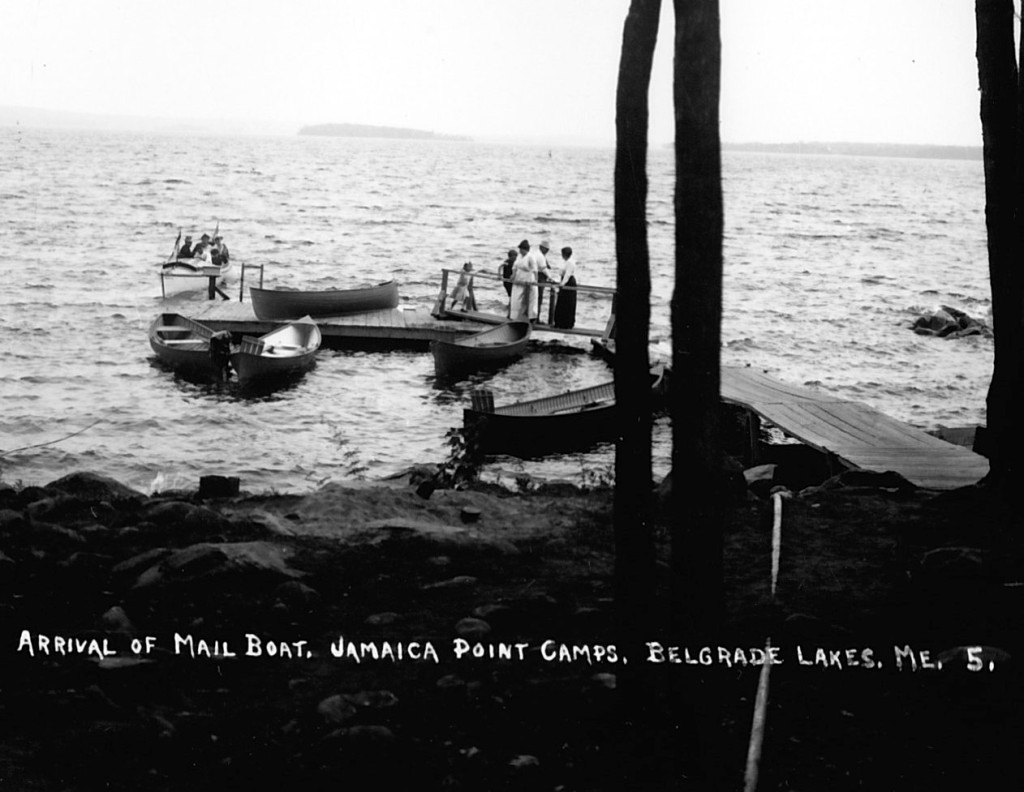
Hundreds of private cottages now crowd the shores of the lakes in Belgrade. A few children’s camps remain active, but many sets of camps have been subdivided. The truck farms that sustained hotels and camps with a central dining room are gone. The “Golden Age of Tourism” may have ended, but thousands flock to the lakes in Belgrade every summer, keeping the heritage alive and well.
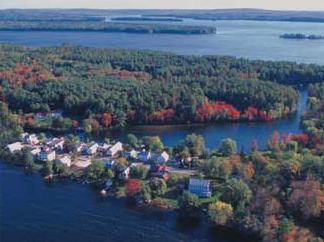
Everyone associated with Belgrade and its lakes should be proud of our rich history, one the Belgrade Historical Society strives to preserve for future generations.
History of Belgrade image credits
Pages:
- 1a – log cabin: campsilos.org*
- 2a – Andrew Yeaton: Paul Stacy Yeaton
- 2b – Map: Belgrade Historical Society
- 3a – Town House: Belgrade Historical Society
- 3b – Rockwood Farm: Maine Historic Preservation Commission
- 4a – Railroad car – Penobscot Marine Museum
- 4b – Will Withers’ box mill: Tukey family collection
- 5a – Grange: Belgrade Historical Society
- 5b – Belgrade Mills: Penobscot Marine Museum
- 6a – Lot Morrill: blainehouse.org*
- 6b – Cemetery: www.wickipedia.org
- 6c – Belgrade Hotel: Belgrade Historical Society
- 7a – Jamaica Point Cottages: Maine Historic Preservation Commission
- 7b – Camp Merryweather staff: Penobscot Marine Museum
- 7c – E.B. White: amsaw.org*
- 7d – Charlotte’s Web: billanddavescocktailhour.com*
- 7e – Snug Harbor: Belgrade Historical Society
- 8a – Prize winning salmon: Donald A. Wilson, Glimpses of Maine’s Angling Past
- 8b. – Guides: Maine Historic Preservation Commission
- 8c – Mail boat: Penobscot Marine Museum
*These website images are allowed for noncommercial reuse with acknowledgment.
